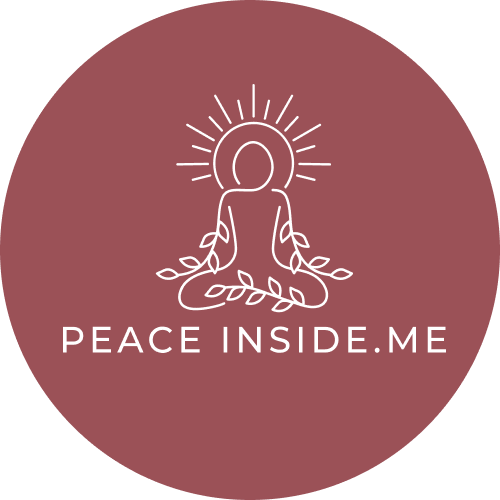peaceinside.me
Tarot Cards For Beginners: How To Start Your Tarot Journey?
| Tarot Cards For Beginners | How To Read Tarot Cards For Beginners | Tarot For Beginners | How To Read Tarot Cards | Tarot Spreads |
Please note, this post is partially or fully sponsored and may contain affiliate links.
Tarot cards have been used for divination and self-discovery for centuries. Whether you're a spiritual seeker, looking for guidance, or just curious, learning to read tarot can be an exciting journey. In this article, we'll cover everything you need to know to start your tarot journey.

1. Choosing Your Tarot Deck
The first step in learning tarot is choosing a deck. With so many options available, it can be overwhelming. It's essential to find a deck that resonates with you and your intuition. Consider the artwork, symbolism, and energy of the deck when making your choice.
2. Getting To Know The Cards
Each tarot deck contains 78 cards, divided into two categories: the Major Arcana and the Minor Arcana. The Major Arcana consists of 22 cards, each representing a significant archetypal experience. The Minor Arcana consists of four suits, each representing a different element and corresponding to everyday experiences.
3. Learning The Meanings Of The Cards
Once you've chosen your deck and become familiar with the cards, it's time to start learning their meanings. It's essential to remember that while there are traditional interpretations, tarot is a tool for intuition and self-discovery. You may find that your intuition guides you to a different interpretation.
4. Understanding The Spreads
Tarot readings typically involve a spread, which is a layout of cards that represents a particular situation or question. There are many different spreads, from simple three-card spreads to more complex spreads like the Celtic Cross. It's essential to choose a spread that works for you and the situation you're exploring.
5. Using Your Intuition
Tarot is a tool for intuition, and it's essential to trust your instincts when reading the cards. Take time to meditate before your readings, and ask for guidance from your higher self or spirit guides. Pay attention to any feelings, images, or impressions you receive during your reading.
The first step in learning tarot is choosing a deck. With so many options available, it can be overwhelming. It's essential to find a deck that resonates with you and your intuition. Consider the artwork, symbolism, and energy of the deck when making your choice.
2. Getting To Know The Cards
Each tarot deck contains 78 cards, divided into two categories: the Major Arcana and the Minor Arcana. The Major Arcana consists of 22 cards, each representing a significant archetypal experience. The Minor Arcana consists of four suits, each representing a different element and corresponding to everyday experiences.
3. Learning The Meanings Of The Cards
Once you've chosen your deck and become familiar with the cards, it's time to start learning their meanings. It's essential to remember that while there are traditional interpretations, tarot is a tool for intuition and self-discovery. You may find that your intuition guides you to a different interpretation.
4. Understanding The Spreads
Tarot readings typically involve a spread, which is a layout of cards that represents a particular situation or question. There are many different spreads, from simple three-card spreads to more complex spreads like the Celtic Cross. It's essential to choose a spread that works for you and the situation you're exploring.
5. Using Your Intuition
Tarot is a tool for intuition, and it's essential to trust your instincts when reading the cards. Take time to meditate before your readings, and ask for guidance from your higher self or spirit guides. Pay attention to any feelings, images, or impressions you receive during your reading.

6. Keeping A Tarot Journal
Keeping a tarot journal can help you track your progress and gain insight into your readings. Record your spreads, interpretations, and any intuitive impressions you receive during your readings. Over time, you'll begin to see patterns and themes emerge, giving you a deeper understanding of the cards.
7. Using Tarot For Self-Care
Tarot can be used as a tool for self-care and personal growth. Incorporate tarot into your self-care routine by using it to gain insight and clarity on issues you're facing. Draw a card each day and reflect on how it relates to your life, or use a specific spread for personal growth and reflection.
8. Developing A Tarot Practice
As you continue on your tarot journey, it's important to develop a regular tarot practice. Set aside time each day or week to practice reading the cards, whether it's for yourself or others. Regular practice will help you develop your intuition and deepen your understanding of the cards.
9. Ethics In Tarot Reading
It's important to approach tarot reading with ethics and integrity. Before beginning a reading, make sure you have the person's consent and are reading with their best interests in mind. Avoid asking leading questions or making predictions that may be harmful or cause unnecessary fear.
Keeping a tarot journal can help you track your progress and gain insight into your readings. Record your spreads, interpretations, and any intuitive impressions you receive during your readings. Over time, you'll begin to see patterns and themes emerge, giving you a deeper understanding of the cards.
7. Using Tarot For Self-Care
Tarot can be used as a tool for self-care and personal growth. Incorporate tarot into your self-care routine by using it to gain insight and clarity on issues you're facing. Draw a card each day and reflect on how it relates to your life, or use a specific spread for personal growth and reflection.
8. Developing A Tarot Practice
As you continue on your tarot journey, it's important to develop a regular tarot practice. Set aside time each day or week to practice reading the cards, whether it's for yourself or others. Regular practice will help you develop your intuition and deepen your understanding of the cards.
9. Ethics In Tarot Reading
It's important to approach tarot reading with ethics and integrity. Before beginning a reading, make sure you have the person's consent and are reading with their best interests in mind. Avoid asking leading questions or making predictions that may be harmful or cause unnecessary fear.

10. Continuing Your Tarot Education
Tarot is a lifelong learning process, and there's always more to discover. Consider taking classes, reading books, or attending workshops to deepen your understanding of the cards and expand your knowledge. The more you learn, the more you'll be able to use tarot to gain insight and guidance in your life.
11. Trusting The Process
Lastly, it's important to trust the process of your tarot journey. There may be times when you feel stuck or unsure of your interpretations, but trust that the cards will reveal their meanings in due time. Trusting the process and being open to the messages of the cards will allow you to gain the most insight and understanding from your readings.
In conclusion, learning to read tarot and tarot card meanings can be a rewarding and enlightening experience. By following these steps, you can begin your tarot journey with confidence and trust in your intuition. Remember that tarot is a tool for self-discovery and personal growth, and each reading is an opportunity to gain insight and understanding.
Happy exploring!
Tarot is a lifelong learning process, and there's always more to discover. Consider taking classes, reading books, or attending workshops to deepen your understanding of the cards and expand your knowledge. The more you learn, the more you'll be able to use tarot to gain insight and guidance in your life.
11. Trusting The Process
Lastly, it's important to trust the process of your tarot journey. There may be times when you feel stuck or unsure of your interpretations, but trust that the cards will reveal their meanings in due time. Trusting the process and being open to the messages of the cards will allow you to gain the most insight and understanding from your readings.
In conclusion, learning to read tarot and tarot card meanings can be a rewarding and enlightening experience. By following these steps, you can begin your tarot journey with confidence and trust in your intuition. Remember that tarot is a tool for self-discovery and personal growth, and each reading is an opportunity to gain insight and understanding.
Happy exploring!
Author Bio
Lisa is a Reiki Master, Certified Life Coach, and a graduate school student pursuing a Master of Social Work with aspirations of becoming a Licensed Clinical Social Worker. Lisa is a co-owner of The Mythical Fairy, which provides free tarot readings and insights about the transformative power of tarot for self-awareness and enlightenment. Beyond tarot, her website is a treasure trove of knowledge on chakras, crystals, and the fascinating world of energy healing.
Lisa is a Reiki Master, Certified Life Coach, and a graduate school student pursuing a Master of Social Work with aspirations of becoming a Licensed Clinical Social Worker. Lisa is a co-owner of The Mythical Fairy, which provides free tarot readings and insights about the transformative power of tarot for self-awareness and enlightenment. Beyond tarot, her website is a treasure trove of knowledge on chakras, crystals, and the fascinating world of energy healing.

Lisa
~
See a typo or inaccuracy? Let us know so we can fix it!
Sharing is caring ❤️
~
~
~
BECOME A PEACE INSIDER
Sign up for peaceinside.me information, inspiration, and specials.


